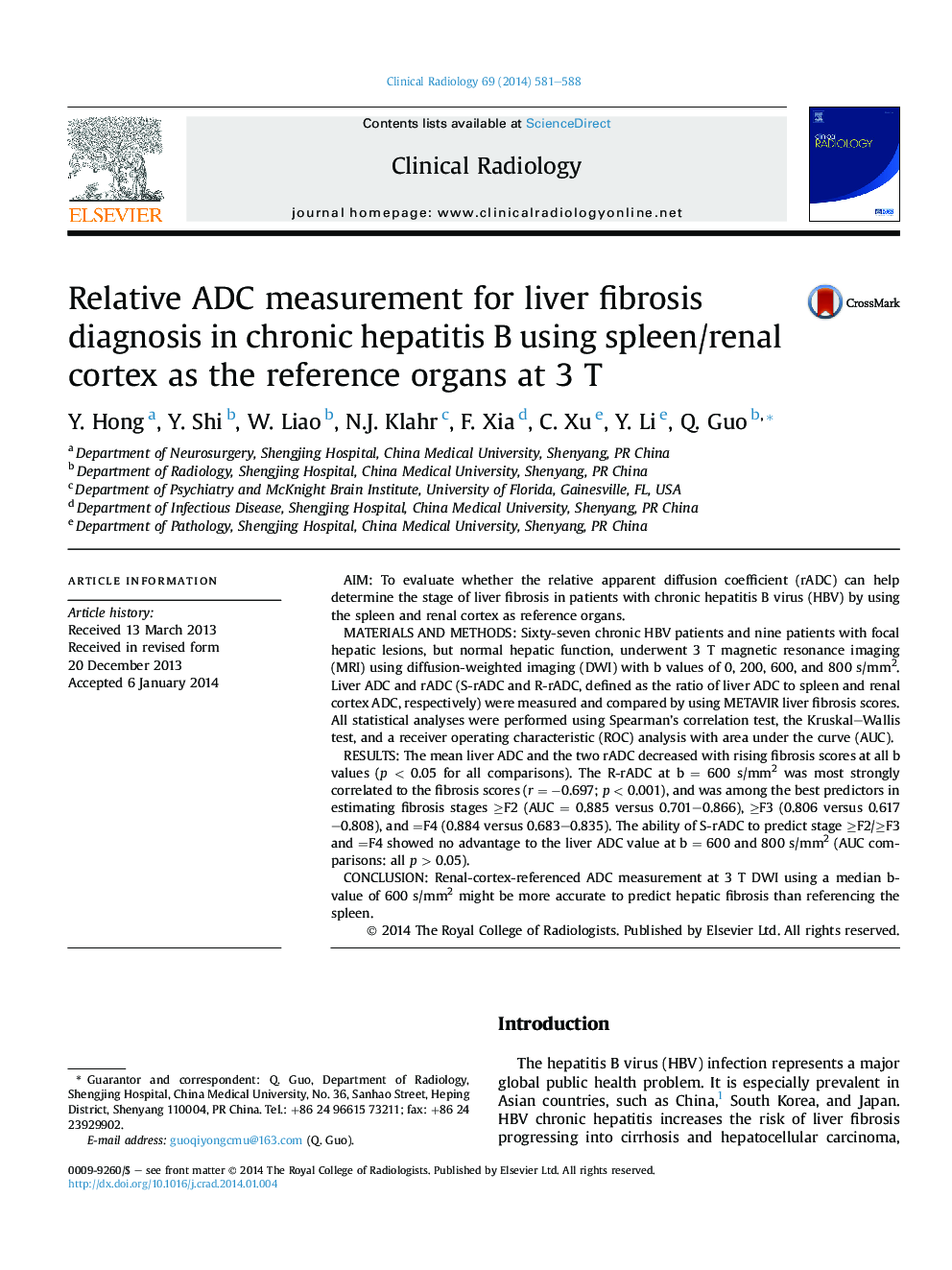| Article ID | Journal | Published Year | Pages | File Type |
|---|---|---|---|---|
| 3981739 | Clinical Radiology | 2014 | 8 Pages |
AimTo evaluate whether the relative apparent diffusion coefficient (rADC) can help determine the stage of liver fibrosis in patients with chronic hepatitis B virus (HBV) by using the spleen and renal cortex as reference organs.Materials and methodsSixty-seven chronic HBV patients and nine patients with focal hepatic lesions, but normal hepatic function, underwent 3 T magnetic resonance imaging (MRI) using diffusion-weighted imaging (DWI) with b values of 0, 200, 600, and 800 s/mm2. Liver ADC and rADC (S-rADC and R-rADC, defined as the ratio of liver ADC to spleen and renal cortex ADC, respectively) were measured and compared by using METAVIR liver fibrosis scores. All statistical analyses were performed using Spearman's correlation test, the Kruskal–Wallis test, and a receiver operating characteristic (ROC) analysis with area under the curve (AUC).ResultsThe mean liver ADC and the two rADC decreased with rising fibrosis scores at all b values (p < 0.05 for all comparisons). The R-rADC at b = 600 s/mm2 was most strongly correlated to the fibrosis scores (r = −0.697; p < 0.001), and was among the best predictors in estimating fibrosis stages ≥F2 (AUC = 0.885 versus 0.701–0.866), ≥F3 (0.806 versus 0.617–0.808), and =F4 (0.884 versus 0.683–0.835). The ability of S-rADC to predict stage ≥F2/≥F3 and =F4 showed no advantage to the liver ADC value at b = 600 and 800 s/mm2 (AUC comparisons: all p > 0.05).ConclusionRenal-cortex-referenced ADC measurement at 3 T DWI using a median b-value of 600 s/mm2 might be more accurate to predict hepatic fibrosis than referencing the spleen.
